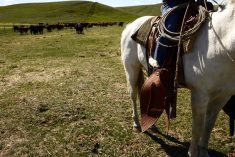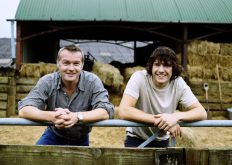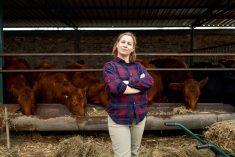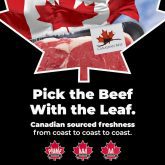Most of you who read this article will likely know that Allan Savory is the founder of Holistic Management. For those who weren’t aware you now know. It is good to give credit where credit is due.
Allan had four key insights that help explain why his work is different and why it produces such positive results. The four insights are: nature functions in wholes; the prey/predator connection; overgrazing is a function of time and the brittleness scale.
The fact that nature functions in wholes was the first insight. Everything is interrelated. The scientifimethod breaks things down and studies the parts. This works extremely well with man-made things but not with the more complex workings of nature.
Read Also

A strategic approach to risk on the ranch
Given the increase in the value of livestock and the market volatility, we need to cover our risks. First,…
As an example, we have done a pretty good job of improving the ecosystem building blocks (energy flow, water cycle, mineral cycle and succession) on our ranch. We anticipated that the result would be healthier land which would produce more high-quality grass. This has happened. The other thing that happened that we didn’t anticipate was that the healthier land also produced healthier forbes (weeds), trees, brush and shrubs. Since everything is interrelated when you improve the land you inadvertently improve the growth of all species not just the ones you are interested in.
Allan observed that there was a definite connection between grazing animals, their predators and the development of grasslands. Predators keep animals bunched and moving. This resulted in high stock density and little or no overgrazing. Plants, especially those in more arid areas require large grazing animals to maintain their health. Today we have removed most of the predators and restrict our animals to small pastures.
The third insight was that overgrazing is a function of time. Traditionally, overgrazing was seen as having too many animals for the grass available. This is not correct. Overgrazing occurs when you stay in a pasture too long at one time or when you return to a pasture before the plants have fully recovered. Overgrazing occurs to individual plants (not a pasture). It begins with the best species and continues with other species over time.
If you want to stop overgrazing (which is vital) use a short graze period (usually three to five days) when growth is good. Then allow the plants to fully recover before they are grazed a second time. Full recovery occurs when the plant is ready to flower. In most areas 60 to 90 days will be adequate.
My best example of overgrazing occurred when we kept a stallion. He was pastured alone in a small pasture that was still larger than one horse required. The result was he grazed the plants he favoured again and again. By fall some areas looked like a manicured golf course mixed with grass that was three feet tall. Plants that he didn’t like had grown all year and were now unpalatable. One horse had overgrazed much more severely than our 600 cows.
Allan’s fourth insight was that different environments responded differently to the same treatment. Allan coined the term brittleness scale to explain this concept. The brittleness scale is a simple numerical scale from 1 to 10. One is a rainforest, 10 is a desert. All environments fall somewhere on this scale. The brittleness is determined by the predictability of rain, the amount of rain, the atmospheric moisture and how plants break down. In a rainforest things decay naturally in a rapid manner. In a desert dead plants tend to remain upright. Plants tend to oxidize, breakdown is very slow and there is little decay.
In a rainforest resting the land (removing the large animals) restores the land. In a desert rest is the most destructive tool known to mankind. Land that tends to be brittle requires grazing animals to maintain its health. About two-thirds of the grazing land in the world tends toward the brittle end of the scale. This is crucial knowledge that needs to be shared.
Let me give you a real-life example. There are areas in Western Canada where planned grazing and continuous grazing exist side by side separated by a fence. On the planned grazing side the land is healthy, grass production is good and over time the carrying capacity is increasing. On the continuous grazed side there is overgrazing, a poor water cycle and grass production is declining. It is very easy to suggest that the carrying capacity be reduced to stop the overgrazing. This does nothing to stop the overgrazing as that is due to time management. What reducing the carrying capacity does is create more rest and more partial rest.
Conditions will continue to worsen leading to further reductions in carrying capacity. The whole thing will escalate with the end result being the creation of a desert. Situations like this occur across Canada and the U.S. and around the world because people are not aware of what overgrazing is or how the brittleness scale functions.
There are many groups that believe resting is good for the land. When you understand what overgrazing is, how the plants developed and the brittleness scale you realize that resting the land leads to its deterioration. This is a message we as ranchers need to share with anyone who is interested. Our future livelihood may depend on it.
Remember, cattle properly managed are a powerful and essential tool to produce and maintain healthy land and healthy plants.
Happy Trails.
Don Campbell Ranches With His Family At Meadow Lake, Sask. He Can Be Reached At 306-236-6088.
















